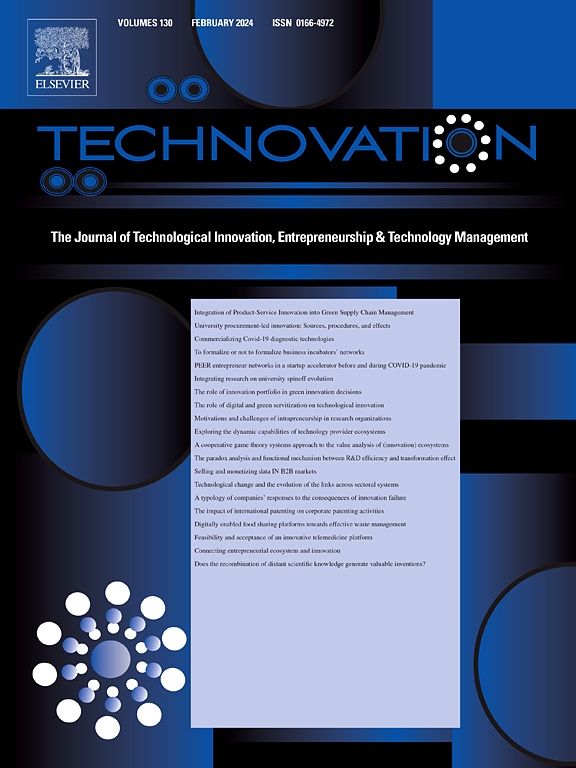Creativity reputation allocation in open and distributed innovation
IF 11.1
1区 管理学
Q1 ENGINEERING, INDUSTRIAL
引用次数: 0
Abstract
Much of today's creative work crosses organizational borders. This limits the possibilities for directly compensating creative workers. Thus, other forms of reward, such as reputation-building, are necessary. This study builds on the concept of creative reputation (reputation for creativity) and signaling theory. It asks how reputation should be assigned to creative workers to reflect their creative abilities most accurately. We illustrate reputation allocation using the example of the academic system and develop a simple computational model to compare how different reputation allocation mechanisms—varying in how they utilize observable information about creative workers' outcomes—produce reputations for individual creative workers. The insights derived from the model contribute to our understanding of open and distributed innovation systems. They also challenge current practices in evaluating and recruiting creative workers and motivate future research on creative reputation and reputation allocation.
开放式分布创新中的创意声誉分配
当今的许多创意工作都跨越了组织边界。这就限制了直接补偿创意工作者的可能性。因此,有必要采取其他奖励方式,如建立声誉。本研究以创意声誉(创意声誉)概念和信号理论为基础。它探讨了如何为创意工作者分配声誉,以最准确地反映他们的创意能力。我们以学术系统为例说明了声誉分配,并开发了一个简单的计算模型,以比较不同的声誉分配机制--它们在如何利用有关创意工作者成果的可观测信息方面各不相同--如何为创意工作者个人创造声誉。该模型得出的见解有助于我们理解开放式和分布式创新系统。它们还对当前评估和招聘创意工作者的做法提出了挑战,并激发了未来对创意声誉和声誉分配的研究。
本文章由计算机程序翻译,如有差异,请以英文原文为准。
求助全文
约1分钟内获得全文
求助全文
来源期刊

Technovation
管理科学-工程:工业
CiteScore
15.10
自引率
11.20%
发文量
208
审稿时长
91 days
期刊介绍:
The interdisciplinary journal Technovation covers various aspects of technological innovation, exploring processes, products, and social impacts. It examines innovation in both process and product realms, including social innovations like regulatory frameworks and non-economic benefits. Topics range from emerging trends and capital for development to managing technology-intensive ventures and innovation in organizations of different sizes. It also discusses organizational structures, investment strategies for science and technology enterprises, and the roles of technological innovators. Additionally, it addresses technology transfer between developing countries and innovation across enterprise, political, and economic systems.
 求助内容:
求助内容: 应助结果提醒方式:
应助结果提醒方式:


